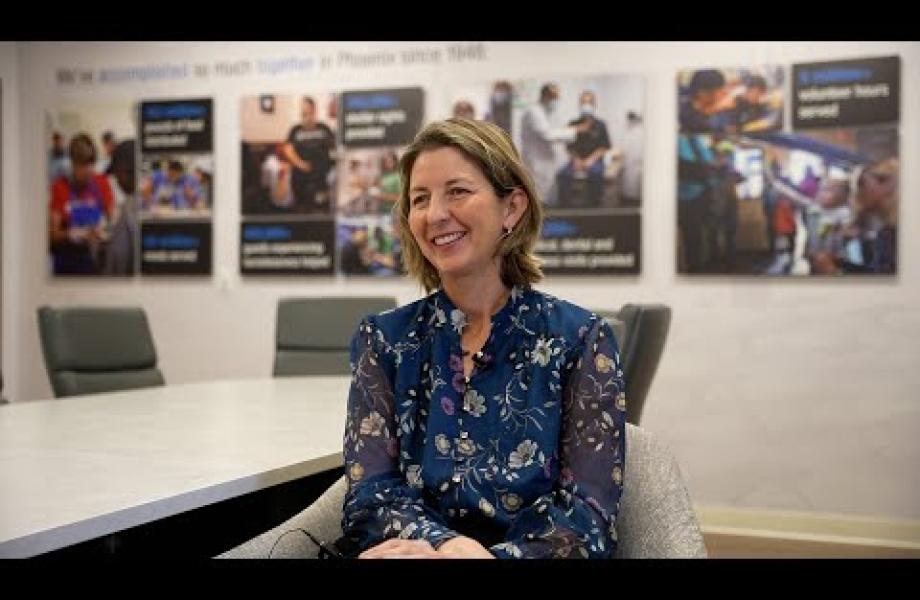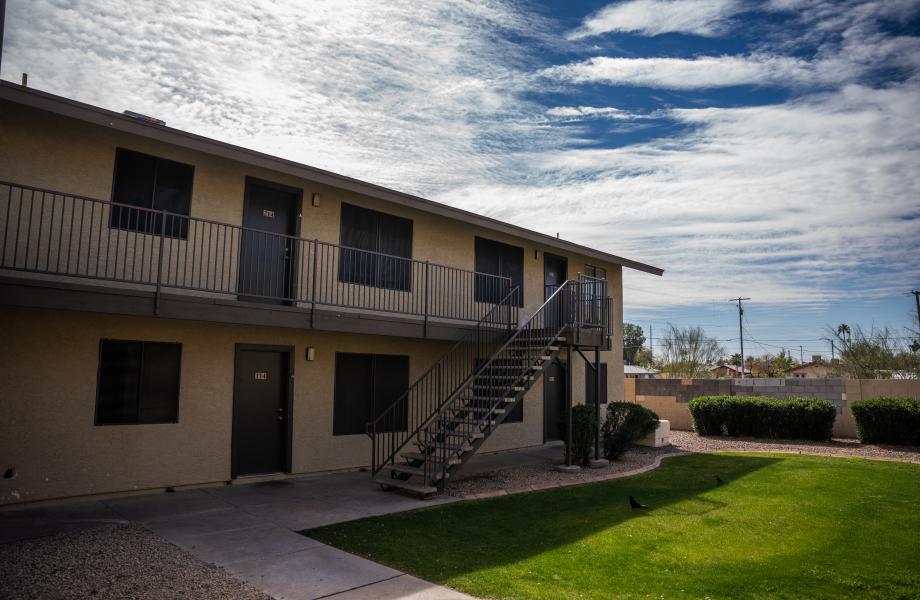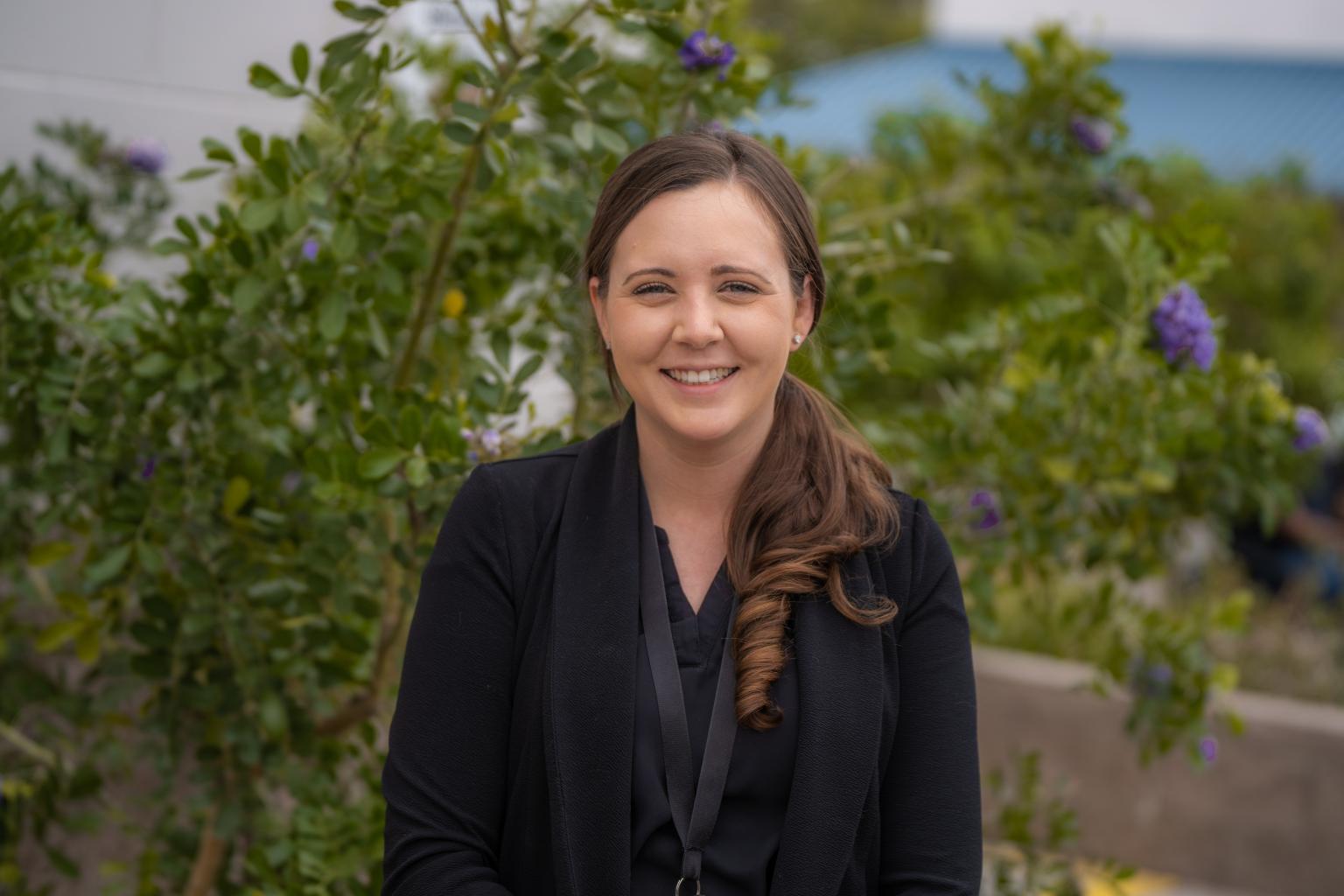
Let's Talk: Workforce Housing
In summer 2024, St. Vincent de Paul will open a 71-bed shelter space dedicated to workforce housing called Rosalie's Place. The new space will feature dorm space for residents, case management, and additional training and education opportunities for residents.
Lindsay Brown is the Program Manager for Workforce Opportunities at SVdP, and she has been an important figure behind workforce programing, the X-WING workforce housing pilot program at the Washington Street shelter, and Rosalie's Place.
Having started out at Ozanam Manor, Lindsay is a social worker by trade and by heart. She has great case management experience and great knowledge of the individuals we serve. After a stint in HR, which gave her even more insight into things like resume building and the hiring process, she’s been running the workforce program ever since.
We sat down with her to learn more about the future of workforce housing will look like for SVdP.
What is workforce housing and how is it different than a typical shelter?
Lindsay Brown: The biggest difference is that it is for individuals who are actively working and experiencing homelessness or very actively looking for work — they’re workplace ready or they want to become workplace ready. That’s the biggest difference. So, we make sure that, when we’re doing our eligibility screenings, individuals who aren’t working are serious about working to change their circumstances.
What does the eligibility screening process look like?
We go through a series of questions, and of course, some of those questions will be, ‘Are you working?’ and ‘Do you have a goal of becoming employed?’ Those are the two main questions that would veer us in the direction of workforce housing versus Ozanam Manor or Washington Street shelter. If someone is eligible, we set up an in-person assessment. During the face-to-face evaluation, potential residents will engage with a case manager who will collect details regarding their background, strengths, as well as their objectives concerning employment and housing. The case manager will also provide them with program details and address any questions they may have. This process ensures that individuals can decide whether Rosalie's Place aligns with their needs. Additionally, the assessment aids us in determining eligibility for Rosalie’s Place or whether a person requires a referral to another interim housing community that better suits their needs.
Are any residents moving over from other SVdP shelters to this workforce housing?
Because workforce is already working out of City Center, we’re already working out of Washington Street, we have a case manager at our dining rooms, we will be able to pull in those participants. So yes, we will, and what’s cool about that is, especially for Washington Street, that’s going to open more shelter beds for others to come into.
What kind of success have you seen with the X-WING workforce housing pilot program at the Washington Street shelter?
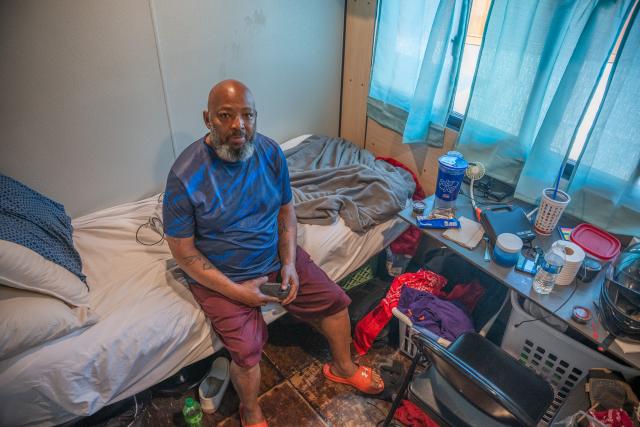
I ran the numbers last week, and so far out of everybody who has exited our X-WING pilot program, 92% of them were employed. Other exciting things that we see are that, once they have a quiet space to breathe and focus on their goals, more individuals become interested in training or certification opportunities. One individual graduated the St. Mary’s LIFT program. One individual received their GED. And then we have three individuals who were accepted in the next cohort of the homebuilding academy. So, we’re seeing more of that than we would, say, in our dining rooms, or even inside [Washington Street] where it’s hard to focus, study, and prepare for these training classes the next day. I think we’ve seen individuals gain employment quicker than they would, say, in our dining rooms, or when we were just doing workforce supportive services inside [Washington Street].
Are there separate case managers that work specifically with workforce housing?
For our workforce X-WING, we brought over Lance Martin, a workforce-focused case manager. So, what happens right now is [the guests] go into the congregate living space first, and they are assigned a shelter case manager. That case manager will get to know the client by developing a service plan with them and if they are a good fit, they will refer them to the workforce X-WING. One thing I wasn’t sure about was if we would always be full in the workforce X-WING? And we are more than full. We always have a waitlist.
So, the need is there in the community to have this workforce housing?
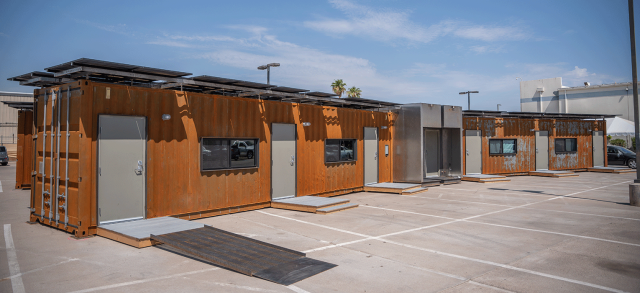
Yes, the need is there. I was really excited about this idea, even before the workforce X-WING, when we were just talking about workforce housing. What I have seen in the X-WING, and what I do believe we will see in [Rosalie’s Place], is that this fellowship starts to emerge. Because you have individuals who are going through a similar experience, but they also have similar goals, they start to support each other. They start to build a bond. They’re sharing resources. They’re sharing ideas. They’re looking at each other’s resumes. They’re saying, ‘Hey, my job is hiring.’ So, a beautiful fellowship is happening here. And what was cool about that is, Steel + Spark did say, ‘We designed those X-WINGS just for that — to create community.’ But this is a special community, and I think we’re going to see clients supporting each other a lot more at Rosalie’s Place.
What will the space at Rosalie's Place look like when it’s open?
There’s going to be a male dorm and a female dorm. Their beds will have partitions or walls so there is a sense of privacy, like Ozanam Manor, just on a smaller scale. We do have a space in there where we’re hoping to bring some computers, so they have a space to work on resumes, apply for job, and look for housing. What I’m most excited about is our workforce training center adjacent to Rosalie’s Place in the new building. That’s something that we’ve just never had before, and I’m so excited to call on community partners and volunteers to do resume clinics. Even ASU (Arizona State University) is interested in doing business communications and business fundamentals classes with us. We’re going to start talks with other community partners that we work with to see if they want to bring some of their skills training to our workforce training space. So that’s what I’m really excited about, to be able to bring these opportunities to our guests and watch them thrive.
Why is this new workforce housing called Rosalie's Place?
The blessed Rosalie Rendu was a daughter of charity and spent over 50 years of her life serving those in need. She challenged how charity was done, and I think she took it to the next level where she was involved with people. It wasn’t just, ‘Here’s a meal, goodbye,’ right? She got to know the individuals she was serving and developed personal connections, and I think that really represents what we do in our workforce program. We take a comprehensive approach to workforce development. We really look at the whole person while we’re supporting them and pulling on their strengths.
What are you most excited about with the opening of Rosalie's Place?
I always say that I think of our program as a program that challenges homeless stereotypes. Although homelessness can happen to anybody, stereotypes portraying homeless individuals as lazy, unmotivated, somehow deserving of their situation overlooks the systemic factors such as generational poverty, unequal access to education, unequal access to employment opportunities, the lack of affordable housing, and then, of course, lack of social supports. So, I’m excited for that social support factor, fellowship factor, and what we’re going to see there. And I’m just excited to bring opportunities to people who otherwise wouldn’t see them. Honestly, I get so excited anytime somebody goes through a training or a certification. That is the goal right there – skill them up, give them more opportunities, give them the ability to really be seen by employers.

